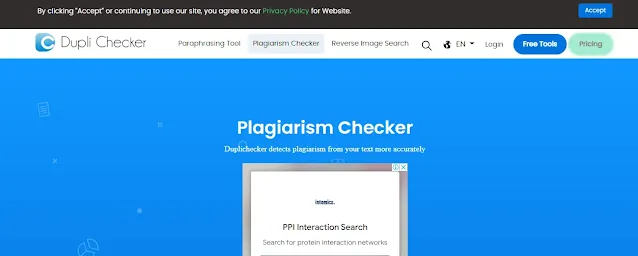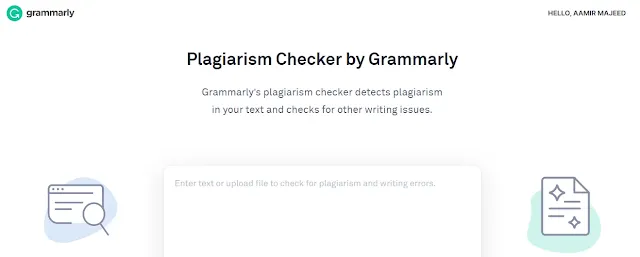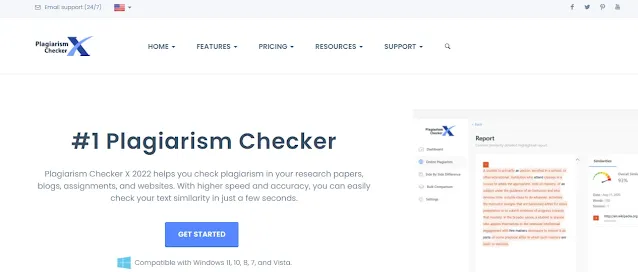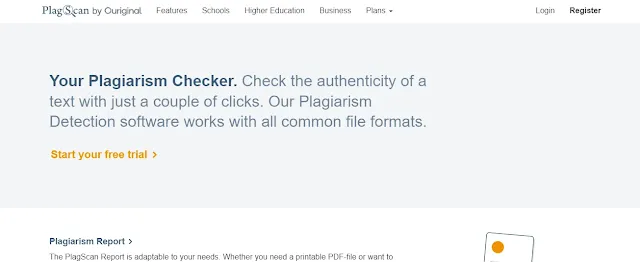 |
| Duplicate Content |
Duplicate content, also known as plagiarism, results in lost links and precious search engine ranking positions when you publish the same or very similar content on your website as you do on someone else’s site. This can lead to both decreases in traffic and loss of revenue, so it’s important to avoid this issue whenever possible.
If you are concerned about plagiarism, you have probably heard of the Google search engine’s Search-Based Indexing or CBM which helps avoid duplicate content on the internet. However, you may not be aware that this technology is not the only way to check if duplicate content exists on your website or even the best way to do so! Check out this article to find out more about other tools and how to use them correctly in order to avoid duplicate content issues.
What Is Plagiarism?
 |
| Plagiarism |
The term plagiarism comes from a Latin word that means to kidnap or steal. Today, many people use it to refer to copyright infringement, which happens when someone uses part or all of another person's work and claims it as their own (note: plagiarizing another's work does not have to involve theft; simply copying words is enough). On an individual level, plagiarizing can be seen as an ethical violation, even if done unintentionally.
If you take content from a source without citing its original author(s), you're violating copyright law—and taking credit for someone else's hard work. That's why many colleges and universities have strict rules about what students can and cannot do with materials found online.
Web duplicate (Plagiarism) Checker Tools
 |
| Plagiarism Tools |
There are several online plagiarism tools that you can use to scan for duplicated content on your site. In general, these tools should be used as a last resort when you're trying to clean up an especially bad situation because they don't provide complete solutions. That said, there's value in being able to duplicate check your own site: if a tool spots something wrong with your website, you have more information about what you need to fix and why it's necessary.
Once you've made your corrections (fixing any SEO issues along with any other elements of concern), take another look at your site with one of these tools again to make sure everything is fixed properly.
CopyScape
 |
| CopyScape |
Launched in 2007, CopyScape is one of those tools that some people in SEO say you should use, while others say it’s a waste of time. The site says it was designed to allow users to determine if copy/text has been copied from other websites and thus avoid using duplicate content. So, you can use Copyscape to see if your competitor is plagiarizing or not.
To find duplicate content, use CopyScape. CopyScape searches websites for duplication and lets you search a domain for content that has been copied from other sites. It’s possible to search multiple domains at once to see how your competitors have duplicated their content across their entire site.
However, it doesn’t come with a built-in penalty filter so make sure you check with Google directly about possible penalties before using it as part of your strategy. If you want a tool that flags potential issues or penalties but also comes with an SEO penalty filter then tries Bluelink instead.
DupliChecker
 |
| DupliChecker |
The easiest way to check duplicate content is with DupliChecker. Just enter your URL and click Start Search. If a page on your site has been indexed by Google, Bing, or Yahoo! search engines, you’ll be able to see other sites that have duplicated it, as well as what pages have been duplicated. Also: WordAI is similar to Copyscape and works in almost any language.
The DupliChecker tool scans web pages for duplicate material. To see the results, simply type each URL into its own text area and click Start. Its system considers a number of parameters, such as word count, keyword relevancy, sentence structure, and other characteristics, to evaluate whether your material is actually unique. The results will show you which parts of your text were replicated and provide you with tips on how to avoid plagiarism in future blogs or articles.
This tool operates as an online content checker, detecting duplicate and plagiarized content on your website. It combines a duplicate content detector with a plagiarism checker to help you create original content. You can use it to check for duplicate content on your website and, if there is, make any necessary changes. The service also provides you with complete control over your website by allowing you to check for word count difficulties and a range of other capabilities.
Grammarly Plagiarism Checker
 |
| Grammarly Plagiarism Checker |
Grammarly is a word processor that helps improve your writing. It includes a plagiarism checker, which checks if any of your content has been copied from other sources. If you’re worried about someone copying your original work, Grammarly is a great tool to make sure your content isn’t plagiarized. In addition to doing simple word searches and identifying grammatical errors.
Grammarly also detects sentence duplicates and offers suggestions on how to rewrite sentences so they’re unique but still communicate exactly what you want them to say. All of these features make it easy for you to see exactly where phrases have been copied from elsewhere and rewritten without being detected as plagiarized material—so you can take care of any offending words or sentences quickly and seamlessly.
The Grammarly Chrome extension checks every internet page you're viewing for duplicate content and notifies you if there's an issue. To ensure that your words are error-free, the plug-in double-checks spelling, punctuation, and grammar. Grammarly is accessible as a Chrome extension and on the Grammarly website.
It isn't perfect, but it can detect certain more subtle plagiarism cases. How? To make sure you haven't mistakenly duplicated something, Grammarly scans what you've written and compares it to tens of thousands of pages in its database. It comes in handy while writing long essays and even when writing image captions. Grammarly is free, but premium features are available for $30 per month or $144 per year (which offers a 30 percent discount). Cross-language content inspection and enhanced grammatical suggestions are among the premium features.
ProWritingAid
 |
| ProWritingAid |
This plagiarism checker tool allows you to upload an entire document and have it scanned for duplicate content, as well as checked against a database of keyword phrases. If you’re caught with something plagiarized in your site, Google can drop your site’s ranking.
To keep up SEO efforts and avoid any issues, make sure to do all searches using ProWritingAid. You should always test out new content on multiple sites to ensure that there is no duplicate content published. ProWritingAid can help make sure you don’t publish anything too similar without even knowing about it!
This tool lets you check your work against a database of more than one billion web pages and verify that there is no duplicate content. It can scan individual documents, as well as entire websites or blogs, and also perform competitive analysis. For example, you can use it to see if anyone else has written an identical product review to yours on another website. The tool is free to try, with premium plans available at $20 per month or $79 (67% Savings) per year.
Plagiarism Checker X
 |
| Plagiarism Checker X |
The Best Way to Find Duplicate Content: If you work for an SEO company, you're undoubtedly well aware of the need of double-checking content before it goes live. Your clients want their blogs and websites to show up on the first page of Google, Bing, Yahoo, and other search engines, and they don't want anybody else to use their work.
If your clients are posting unique material with only a few phrases repeated here and there, this can be a difficult process. Even a small amount of plagiarised language can have major consequences for your client's search engine rankings, forcing them to drop several pages. A plagiarism checker is an excellent idea because content syndication and website copying are becoming more widespread in online marketing. You can use the following websites to see if your content has been replicated elsewhere.
Note: These services don't check for plagiarized code, so if you use JavaScript or another language on your site, it's still possible that people could copy portions of it and republish that code elsewhere on their site.
Copyleaks
 |
| Copyleaks |
Since Copyleaks analyzes content, it’s an ideal tool to use if you suspect that someone is plagiarizing your content. Copy-pasting your work into Copyleaks will reveal if your work has been copied elsewhere in full or part. If you do find a match (and not just similar wording), you can file a copyright infringement claim with a DMCA notice through their website.
While Copyleaks isn’t a tool I would recommend, it is a tool that could find some plagiarized content on your website. Of course, they’re not as thorough as many other tools out there, but you may want to give them a try. If you find any duplicated content on their site, you may quickly remove it. In addition to helping you find duplicate content, Copyleaks will also inform you about keywords and phrases that are being overused throughout your site.
Plagscan
 |
| Plagscan |
When you’re working on a big project, it can be tempting to copy and paste content from other sources to save time. If you accidentally use copied text in a piece of work and don’t cite your source, you could be guilty of plagiarism—and plagiarism isn’t just an ethical issue. It can also create legal problems if you get caught (for example, if someone sues your business over copyright infringement). One way to avoid accidentally violating copyrights is by using tools like Plagscan.
If you're worried about imitation websites plagiarising your material, this tool is a must-have. It looks at a URL, tells you if there are any pages that have duplicate content with yours and where those sites are hosted. This kind of data can be valuable if you ever need to file a DMCA (Digital Millennium Copyright Act) claim or if you just want to see what's going on out there in Web Land.
Conclusion
Duplicate content or plagiarism is the biggest issue plaguing content marketing today. To prevent these problems from surfacing, you need a reliable duplicate content checker and plagiarism tool to look over your pages, posts, and site as a whole. These Duplicate content checker tools are great. They help you find out if there is duplicate content on your website. If so, it’s probably best to remove that content since Google will see multiple copies of your pages as unnecessary and devalue them.
Use these tools to make sure your website doesn't contain any identifying information before it goes up to save yourself time in the future. Even if it already does, they may be able to assist you in promptly correcting the problem and avoiding future Google penalties.
Post a Comment